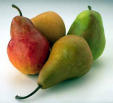San Antonio Express News
Gardening, Etc.
Sunday, December 21, 2003
By Lynn Rawe
Have you ever considered planting a fruit tree in your yard? Mid-winter is an excellent time to plant fruit trees in the Bexar County area. Planting at this time allows the tree to place its energy toward root development in preparation for spring growth. Most fruit trees require a growing space of 25 feet by 25 feet; but dwarf fruit trees need only about 12 feet by 12 feet. The site must have exposure to full sun for at least 7 to 8 hours per day. Don’t plant too many fruit trees! A single peach tree can easily produce two bushels of fruit–about 100 pounds!
Prior to planting, the site should be prepared as follows: clear the site of perennial weeds and thoroughly till an area at least 4 feet by 4feet in size. Any hard pan layer beneath the soil should be broken up as well. Level the site, then till again. Organic matter may be added to the planting area, but it is not necessary. Don’t add fertilizer. To allow for better drainage, the planting site may be built up so that the tree will be sitting on a small berm.
At planting time, plant the tree in the middle of the prepared area in a hole as big as the root system, usually about 12 inches square, and at least 18 inches deep. Plant the tree and refill the soil to the same depth that the tree grew in, at the nursery. Be careful that the tree does not settle too deep. If the trunk of the plant is submersed in soil at a higher level than it was originally grown, the tree will die. In April or may, as the grass greens up, spray a 3 or 4 foot circle around the base of the tree with a glyphosate herbicide. It is critical that this be done if the tree is to grow well. If you do little else, maintain this weed-free circle around the tree. The tree will do better than if nothing else is done.
Recommended fruit varieties for our area include:
- Peaches: Springold, Bicentennial, Sentinel, Ranger, Harvester, Red Globe, Milam, Denman, Loring, Dixiland, Redskin, Jefferson, Surecrop, Belle of Georgia
- Apricots: Bryan, Hungarian, Moorpark
- Plums: Morris, Methley, Ozark, Premier, Bruce, Allred
- Pears: Orient, Moonglow, Kieffer, LeConte, Ayers, Garber, Maxine
- Apples: Jerseymac, Gala, Starkspur G. D., Starkrimson R. D., Mollie’s Delicious, Ozark Gold
When buying your new fruit tree, select a mid-size tree. They are usually cheaper and grow just as well, if not better, than the larger trees. It is also easier to cut a 3 to 4 foot tree back to 18-24 inches, than to prune a 5 to 6 foot tree to that small size. Such strong cutback is necessary not only to remove apical dominance, but to put the top in balance with a reduced root system, and force out strong vigorous shoots which are easier to train. When purchased, the trees should have healthy white roots with no brown streaks. Also reject any tree with borer presence or damage. With proper care, it is very possible for your fruit tree to fruit the second year after planting.
Space won’t permit us to share all of the information available on growing fruit trees in the home garden, but if you have Internet access, check out the great abundance of info available at: http://aggie-horticulture.tamu.edu/extension/fruitgarden/fruitgarden.html and
http://aggie-horticulture.tamu.edu/citrus/citrus.htm. Extension also has some helpful publications that include proper pruning procedures. Give us a call at 210/467-6575.
Last Minute Shopping? For a great stocking stuffer, give the gardener in your life a one-year subscription to the Texas Cooperative Extension/Master Gardener produced: San Antonio Gardener, a monthly newsletter filled with timely information and hints from our own Master Gardeners. Send a $18 check (made payable to San Antonio Gardener), to 3355 Cherry Ridge Drive, Suite 208, San Antonio, TX 78230.
This article was contributed by Lynn Rawe, County Extension Agent-Horticulture, Texas Cooperative Extension in Bexar County.




